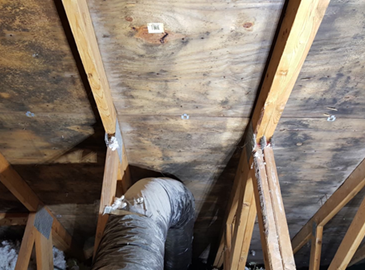
Introduction
It’s essential to keep cleaning tools clean. The same goes for your kitchen sponge. It’s a different issue if you outsource the cleaning job to professionals. To do that, you can search for “cleaning services near me” and hire professionals for the job. For now, let’s figure out why and how you need to clean your kitchen sponges.
The Details
- Need for cleaning the kitchen sponge – Kitchen sponges are always in close contact with food waste and all kinds of filth in the kitchen sink. Despite being soaked in hot soapy water all the time, they can contain all sorts of germs that can make you very sick and put everyone’s health inside your home at risk. Think of kitchen sponges as smelly rags. They are the perfect breeding ground for mold, yeast, bacteria, and all kinds of microbes.
Research also suggests that they can pick up fecal contaminants. Studies have also shown that they can contain as many as 360 types of bacteria with a colony of 45 billion on every square centimeter. Let’s put that number into context. It basically means that a regular kitchen sponge that’s used regularly can contain as many creepy and harmful microbes as your toilet seat. That’s what you’re using to clean the dishes. You use those dishes to eat and that means you’re at the risk of cross-contamination. That’s why it’s important to clean and disinfect your kitchen sponges regularly.
With a dirty kitchen sponge, you risk making yourself and everyone in the family very sick. Kitchen sponges contain both salmonella and E.coli, two very common bacteria that cause food-borne illnesses. There’s also Campylobacter that can cause bacterial diarrhea. So regular soaking in hot soapy water just isn’t enough. With that out of the way, let’s check out how you can effectively clean and disinfect kitchen sponges.
- Vinegar – Vinegar is a common household item that’s also an extremely potent cleaning agent. It’s inexpensive, biodegradable, doesn’t contain any toxins, and can effectively disinfect the sponge. You can even use vinegar to clean similarly filthy places like drains, showerheads, microwave ovens, and more.
Start off by soaking your kitchen sponge in vinegar for at least 5 minutes. Make sure that the vinegar is full-strength and isn’t diluted in any way. After a few minutes, wring out the vinegar from the sponge and rinse it thoroughly in warm water. Next, make sure to dry off the sponge to get rid of the smell. You can also use essential oil or lemon juice to get rid of the vinegar smell if drying doesn’t help.
- Bleach – Another household item that can help clean the kitchen sponge is bleach. It can kill all kinds of microbes including bacteria, viruses, mold, and mildew. Mix around ¾ cup of bleach with a gallon of water and drop the sponge in the mixture. Allow the sponge to soak for several minutes and then rinse it in water.
Similar to vinegar, bleach also has a very strong smell. That’s why you should clean the sponge outside your home in a bucket so that your home doesn’t smell like vinegar or bleach all day. After the sponge is rinsed, make sure to dry it in a shaded area and then use lemon or essential oil to get rid of any residual odor.
- Boiling water – If you don’t like the above-mentioned cleaning methods for their strong residual odor, you can kill off the germs and microbes inside the kitchen sponge the old-fashioned way, with heat. Put a pot of water on the kitchen stove and wait till it starts to boil. After that, put the kitchen sponge inside the pot of boiling water and wait for a few minutes.
Make sure not to raise the temperature as the sponge is being boiled in water. After around 5 minutes, bring out the sponge and let it cool down. After the sponge gets cold, wring out excess moisture and the sponge is ready for use.
- Microwave oven – You can also kill off bacteria inside the kitchen sponge by spinning it in the microwave oven. Before you put the kitchen sponge in the microwave oven, make sure to moisten it up. A dry kitchen sponge can catch on fire and then you’ll have a lot more things to worry about.
Put the wet kitchen sponge in a bowl and set the microwave on the highest heat setting. Microwave the sponge for around 5 minutes. Next, take out the sponge and allow it ample time to cool down. When it’s cool enough, you can wring out excess moisture from the sponge and start using it to clean dishes.
- Dishwasher – Cleaning a kitchen sponge in the dishwasher is the easiest solution of them all. Place the sponge at the topmost rack and let the dishwasher run a heat-dry cycle. Make sure you choose the longest and hottest cycle to kill off any bacteria, fungus, or other types of microbes in the sponge. Similar to the microwave method, make sure to wet the sponge to avoid it from catching on fire.
- Old kitchen sponges – Sometimes old kitchen sponges are irredeemable and need to be thrown out. If the kitchen sponge smells funny and doesn’t lose stains even after using the above-mentioned cleaning methods, it’s a good time to throw it out.
However, you can still get some more uses out of the old kitchen sponge. For instance, you can keep old kitchen sponges at the bottom of planters so that they can retain more moisture for the plants. You can also use pieces of old sponge for buffing your shoes with a polish of your choice.
Conclusion
As you can see, kitchen sponges can be a breeding ground for bacteria and all kinds of filth. That’s why you need to keep them clean and get rid of them when the time comes. Otherwise, you can directly outsource cleaning tasks to professionals. To do that, you can search for “cleaning services near me” and hire pros for the job.




